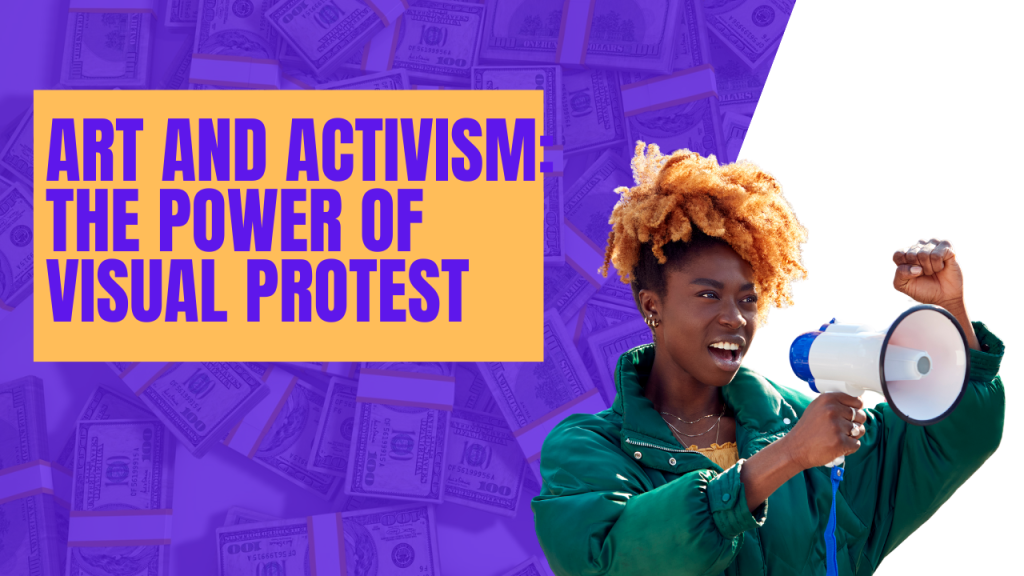
Art has long been a vehicle for social change, a tool wielded by activists to challenge norms, provoke thought, and inspire action. When art and activism converge, the result can be a powerful force for highlighting injustices, advocating for marginalized communities, and demanding change. From iconic posters to striking murals, the use of visual protest in the realm of activism has a rich history of making a lasting impact. This article explores the ways in which art and activism intersect, showcasing examples of how visual protest has shaped movements and brought critical issues to the forefront.
The History of Visual Protest
Visual protest is not a new concept. Throughout history, artists have used their creativity to challenge the status quo and confront social, political, and environmental issues. One of the most iconic examples is the work of artist and activist Keith Haring. Haring’s bold, graphic style became synonymous with the AIDS activism of the 1980s. His “Silence = Death” poster, featuring a bright pink triangle on a black background, remains a powerful symbol of the fight against HIV/AIDS.
Similarly, the feminist art movement of the 1960s and 70s utilized visual protest to challenge patriarchy and advocate for women’s rights. Artists such as Judy Chicago and the members of the Guerilla Girls used art to address issues of gender inequality, representation, and reproductive rights. The “The Dinner Party” by Judy Chicago, an iconic piece representing historical women often left out of mainstream narratives, stands as a testament to the power of art as activism.
Contemporary Examples of Visual Protest
In more recent times, artists continue to use their platforms to shed light on pressing issues. The Black Lives Matter movement, for instance, has been accompanied by a wave of powerful visual art. The mural of George Floyd in Minneapolis, painted by artists Cadex Herrera and Greta McLain, became a site of mourning, remembrance, and a call for justice following Floyd’s murder. These murals not only honor the lives lost but also serve as a visual reminder of the ongoing fight against systemic racism.
Banksy, the anonymous street artist known for his politically charged works, has also made a significant impact with his art. His piece “Girl with a Balloon,” which shows a young girl reaching for a red, heart-shaped balloon, has been widely interpreted as a commentary on hope and the fleeting nature of life. Banksy’s works often appear unexpectedly in public spaces, challenging viewers to confront uncomfortable truths about society.
The Role of Social Media
The rise of social media has further amplified the impact of visual protest. Platforms like Instagram and Twitter allow artists to share their work instantly with a global audience, sparking conversations and mobilizing supporters. The #MeToo movement, which gained momentum on social media, was accompanied by powerful visual campaigns. The “Survivor Love Letter” project, initiated by activist Tani Ikeda, featured handwritten letters to survivors of sexual assault, creating a poignant and visible display of solidarity.
Art and activism have a symbiotic relationship, each enriching the other in the pursuit of social change. Visual protest has a unique power to capture attention, evoke emotion, and spark dialogue in ways that traditional forms of activism may not. Whether through murals on city walls, posters at protests, or digital campaigns on social media, artists continue to be at the forefront of movements for justice and equality. As we look to the future, the intersection of art and activism will undoubtedly continue to shape and inspire the fight for a more just and equitable world.